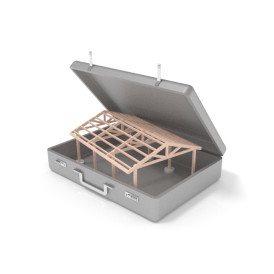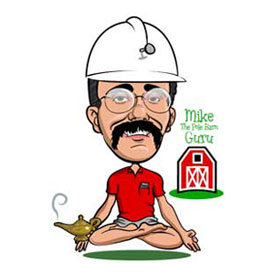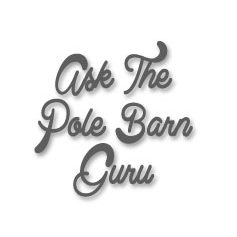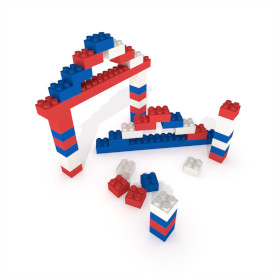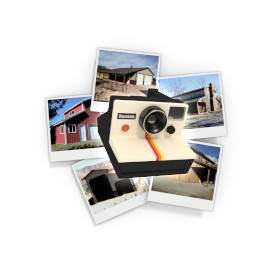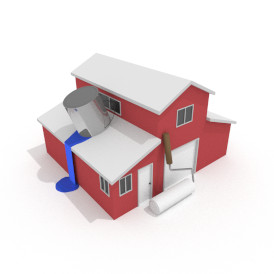This Wednesday the Pole Barn Guru answers reader questions about insulating a metal post frame garage in Florida with vented soffits and peak, replacing nails with EPDM gasketed screws on an existing structure, and ideas to replace rusted steel on the lower 3′ of a structure.
 DEAR POLE BARN GURU: I have a metal post frame garage in south central Pa. I want to insulate this building. It is metal siding screwed to 2×4 wood purlins. It has vented soffits and is vented at the peak of the roof. How would I go about insulating this building? My hope is to use Polyiso foam board and insulate the slope of the roof, not the flat ceiling. Please give some advice for air gaps and vapor barriers for the roof and methods for insulating the walls. JASON in MANHEIM
DEAR POLE BARN GURU: I have a metal post frame garage in south central Pa. I want to insulate this building. It is metal siding screwed to 2×4 wood purlins. It has vented soffits and is vented at the peak of the roof. How would I go about insulating this building? My hope is to use Polyiso foam board and insulate the slope of the roof, not the flat ceiling. Please give some advice for air gaps and vapor barriers for the roof and methods for insulating the walls. JASON in MANHEIM
DEAR JASON: Unless you are willing to use closed cell spray foam applied directly to underside of your roof steel, sealing off soffit and ridge vents, you are stuck without being able to insulate with slope of roof.
Why? Air impermeable insulation must be installed either directly above or below your roof deck – your roof purlins negate ability to consistently do this. Otherwise, an inch or more of unobstructed airflow must be provided directly below roof deck from eave-to-ridge (again, purlins are obstructing). Insulting at ceiling level is indeed your best bet. Install a ceiling and blow in granulated Rockwool (best) or fiberglass. Walls – completely fill insulation cavity with Rockwool batts, use a well-sealed interior vapor barrier (6mil or thicker clear visqueen).
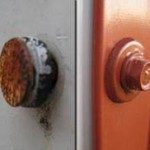 DEAR POLE BARN GURU: I have a 1000sf metal building with Galvalume roof (on 2×10 purlins, no deck) built in 1999 with gasketed nails. I’m experiencing some small leaks from some of the nails. The metal is still good. Do you know someone that can replace the nails with screws, approximately 800. MIKE in CINCINNATI
DEAR POLE BARN GURU: I have a 1000sf metal building with Galvalume roof (on 2×10 purlins, no deck) built in 1999 with gasketed nails. I’m experiencing some small leaks from some of the nails. The metal is still good. Do you know someone that can replace the nails with screws, approximately 800. MIKE in CINCINNATI
DEAR MIKE: I would recommend posting on your local craigslist under “gigs” for a project such as yours. Nails should be replaced by #14 diameter screws, ideally with at least a 1/2″ greater penetration into wood than your nails. Look for screws with EPDM rather than neoprene rubber gaskets.
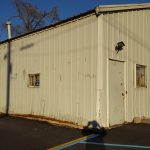 DEAR POLE BARN GURU: The bottom 3′ of our metal sided maintenance shop has been rusted out by salt. Do you know of an organization that could replace the bottom sections? MARK in ROCHESTER
DEAR POLE BARN GURU: The bottom 3′ of our metal sided maintenance shop has been rusted out by salt. Do you know of an organization that could replace the bottom sections? MARK in ROCHESTER
DEAR MARK: For local projects, such as yours, I normally recommend posting in your nearby Craigslist under “Gigs”. You will usually get a fair number of responses. You may want to consider replacing this lower portion with material other than metal – something resistant to ravages of deterioration due to chemical reaction of salt with metal
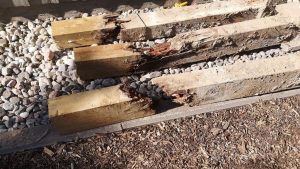 Second – screws do not rot wood. It is a function of one or more of three things – screws improperly seated (screws into high ribs rather than flats; over or under driven; or not driven perpendicular to panels). Or, screws with neoprene gaskets (most are), instead of EPDM. Neoprene is not UV resistant, so quickly becomes brittle and cracks. Standard screws are #9 or #10 diameter and these narrow shanks will cause slotting of steel panels, over time, due to cyclic wind loads. Shanks are acting like knives! We found this when we did full scale diaphragm testing of steel panels over three decades ago. This was solved by our engineer, who did our testing, designing what is now known as “Diaphragm Screws”. Produced by Leland Industries in Canada, Hansen Pole Buildings provides them exclusively for through screwed steel panels. 1-1/2″ long, they are a #12 shank, except right below head (where screw passes through panels) it is a #14 diameter. These screws also have EPDM gaskets, have a JS1000 plating (read more here:
Second – screws do not rot wood. It is a function of one or more of three things – screws improperly seated (screws into high ribs rather than flats; over or under driven; or not driven perpendicular to panels). Or, screws with neoprene gaskets (most are), instead of EPDM. Neoprene is not UV resistant, so quickly becomes brittle and cracks. Standard screws are #9 or #10 diameter and these narrow shanks will cause slotting of steel panels, over time, due to cyclic wind loads. Shanks are acting like knives! We found this when we did full scale diaphragm testing of steel panels over three decades ago. This was solved by our engineer, who did our testing, designing what is now known as “Diaphragm Screws”. Produced by Leland Industries in Canada, Hansen Pole Buildings provides them exclusively for through screwed steel panels. 1-1/2″ long, they are a #12 shank, except right below head (where screw passes through panels) it is a #14 diameter. These screws also have EPDM gaskets, have a JS1000 plating (read more here:  Next possible culprit would be a screw not properly seated. If under driven, (EPDM gasket not compressed) screw can normally be driven in further. If over driven (gasket smashed) screw should be replaced with either a larger diameter and longer length screw (say #14 x 2″) or by driving a wooden match stick or other slender piece of solid wood into screw hole, then use an originally sized screw back in original hole. If a screw was driven in other than perpendicular to roofing, it may be possible to remove the screw and drive it straight in.
Next possible culprit would be a screw not properly seated. If under driven, (EPDM gasket not compressed) screw can normally be driven in further. If over driven (gasket smashed) screw should be replaced with either a larger diameter and longer length screw (say #14 x 2″) or by driving a wooden match stick or other slender piece of solid wood into screw hole, then use an originally sized screw back in original hole. If a screw was driven in other than perpendicular to roofing, it may be possible to remove the screw and drive it straight in.